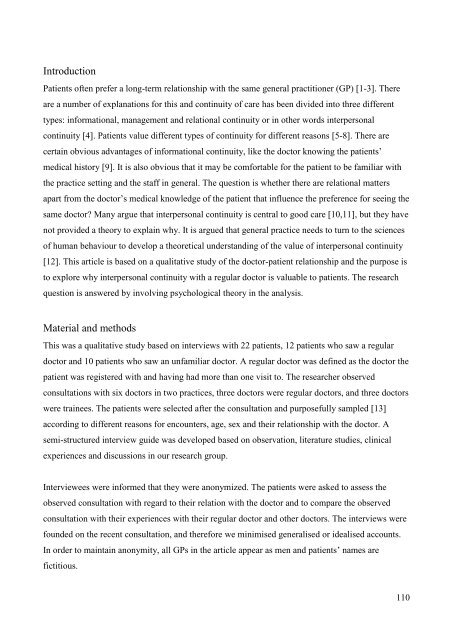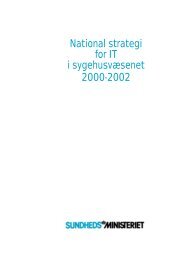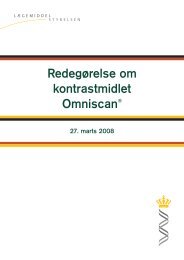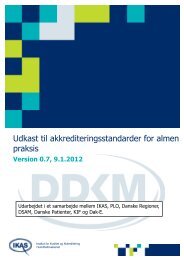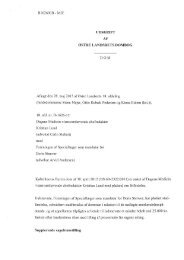Patientperspektivet på læge-patientrelationen i ... - Dagens Medicin
Patientperspektivet på læge-patientrelationen i ... - Dagens Medicin
Patientperspektivet på læge-patientrelationen i ... - Dagens Medicin
Create successful ePaper yourself
Turn your PDF publications into a flip-book with our unique Google optimized e-Paper software.
Introduction<br />
Patients often prefer a long-term relationship with the same general practitioner (GP) [1-3]. There<br />
are a number of explanations for this and continuity of care has been divided into three different<br />
types: informational, management and relational continuity or in other words interpersonal<br />
continuity [4]. Patients value different types of continuity for different reasons [5-8]. There are<br />
certain obvious advantages of informational continuity, like the doctor knowing the patients‟<br />
medical history [9]. It is also obvious that it may be comfortable for the patient to be familiar with<br />
the practice setting and the staff in general. The question is whether there are relational matters<br />
apart from the doctor‟s medical knowledge of the patient that influence the preference for seeing the<br />
same doctor? Many argue that interpersonal continuity is central to good care [10,11], but they have<br />
not provided a theory to explain why. It is argued that general practice needs to turn to the sciences<br />
of human behaviour to develop a theoretical understanding of the value of interpersonal continuity<br />
[12]. This article is based on a qualitative study of the doctor-patient relationship and the purpose is<br />
to explore why interpersonal continuity with a regular doctor is valuable to patients. The research<br />
question is answered by involving psychological theory in the analysis.<br />
Material and methods<br />
This was a qualitative study based on interviews with 22 patients, 12 patients who saw a regular<br />
doctor and 10 patients who saw an unfamiliar doctor. A regular doctor was defined as the doctor the<br />
patient was registered with and having had more than one visit to. The researcher observed<br />
consultations with six doctors in two practices, three doctors were regular doctors, and three doctors<br />
were trainees. The patients were selected after the consultation and purposefully sampled [13]<br />
according to different reasons for encounters, age, sex and their relationship with the doctor. A<br />
semi-structured interview guide was developed based on observation, literature studies, clinical<br />
experiences and discussions in our research group.<br />
Interviewees were informed that they were anonymized. The patients were asked to assess the<br />
observed consultation with regard to their relation with the doctor and to compare the observed<br />
consultation with their experiences with their regular doctor and other doctors. The interviews were<br />
founded on the recent consultation, and therefore we minimised generalised or idealised accounts.<br />
In order to maintain anonymity, all GPs in the article appear as men and patients‟ names are<br />
fictitious.<br />
110


